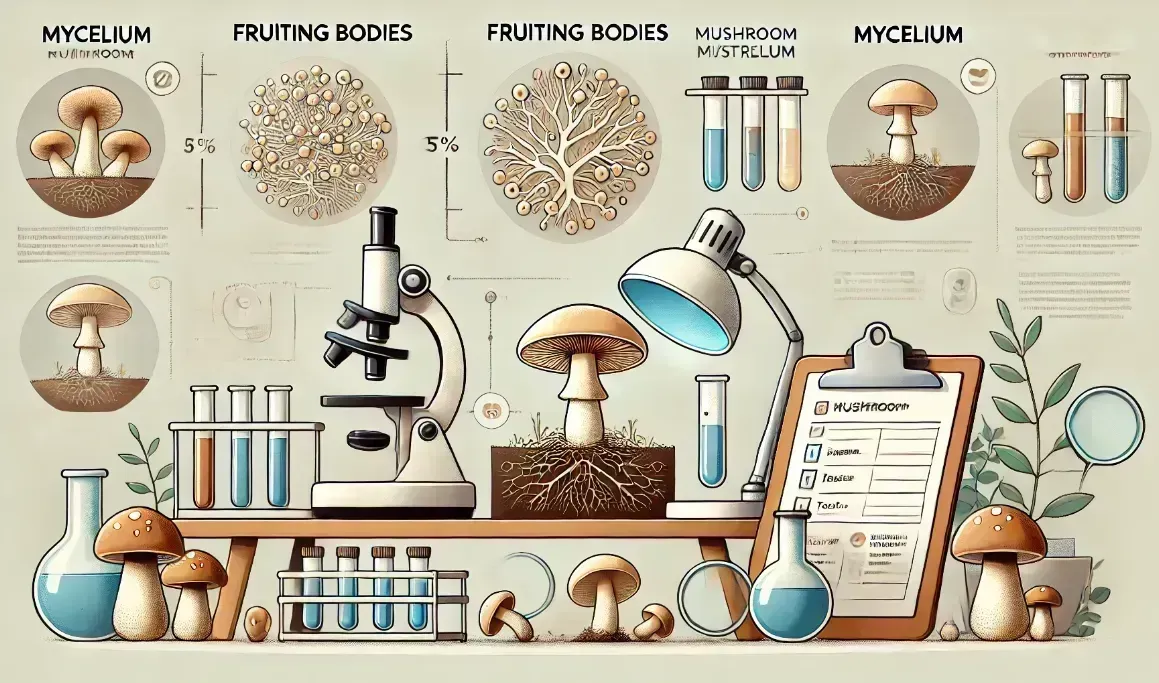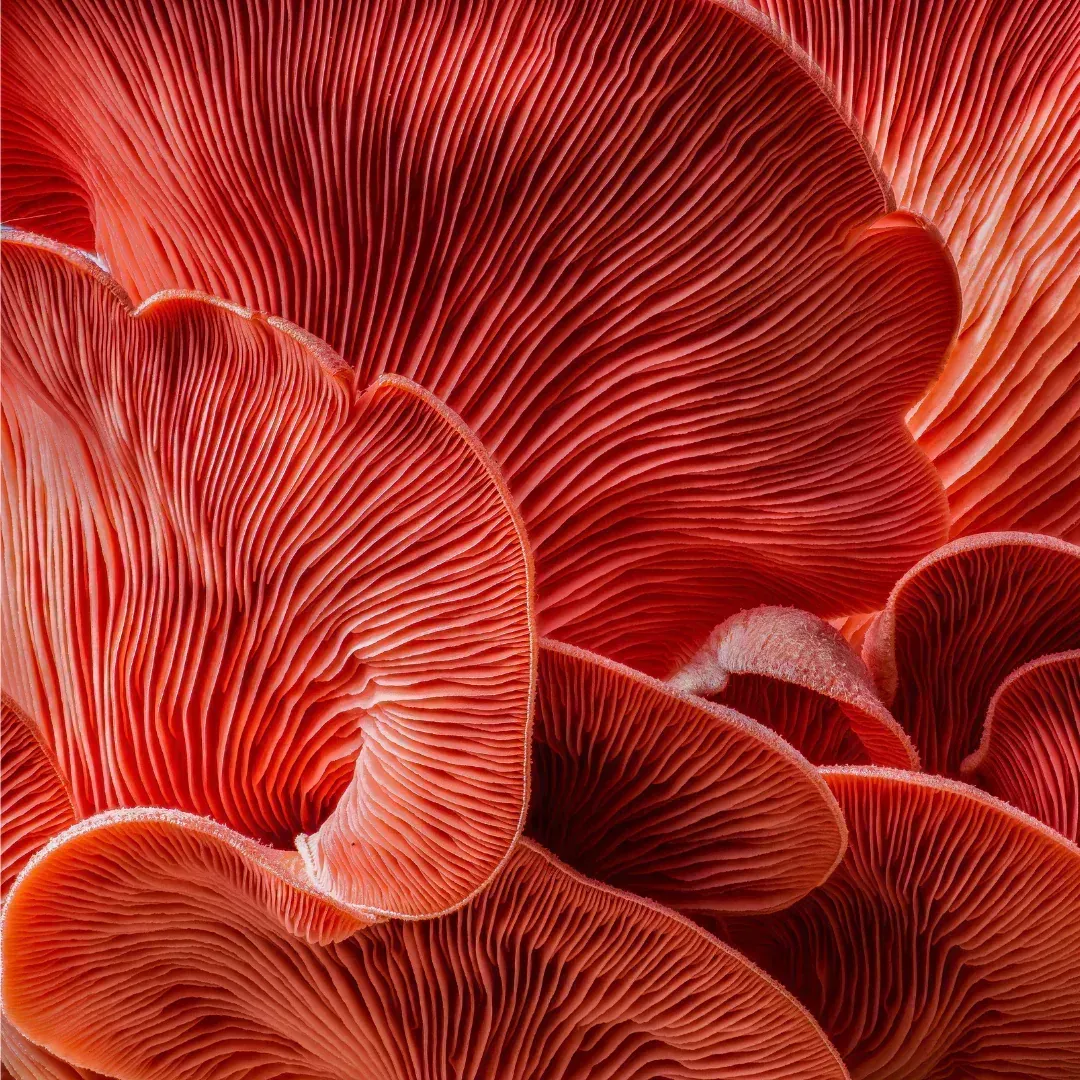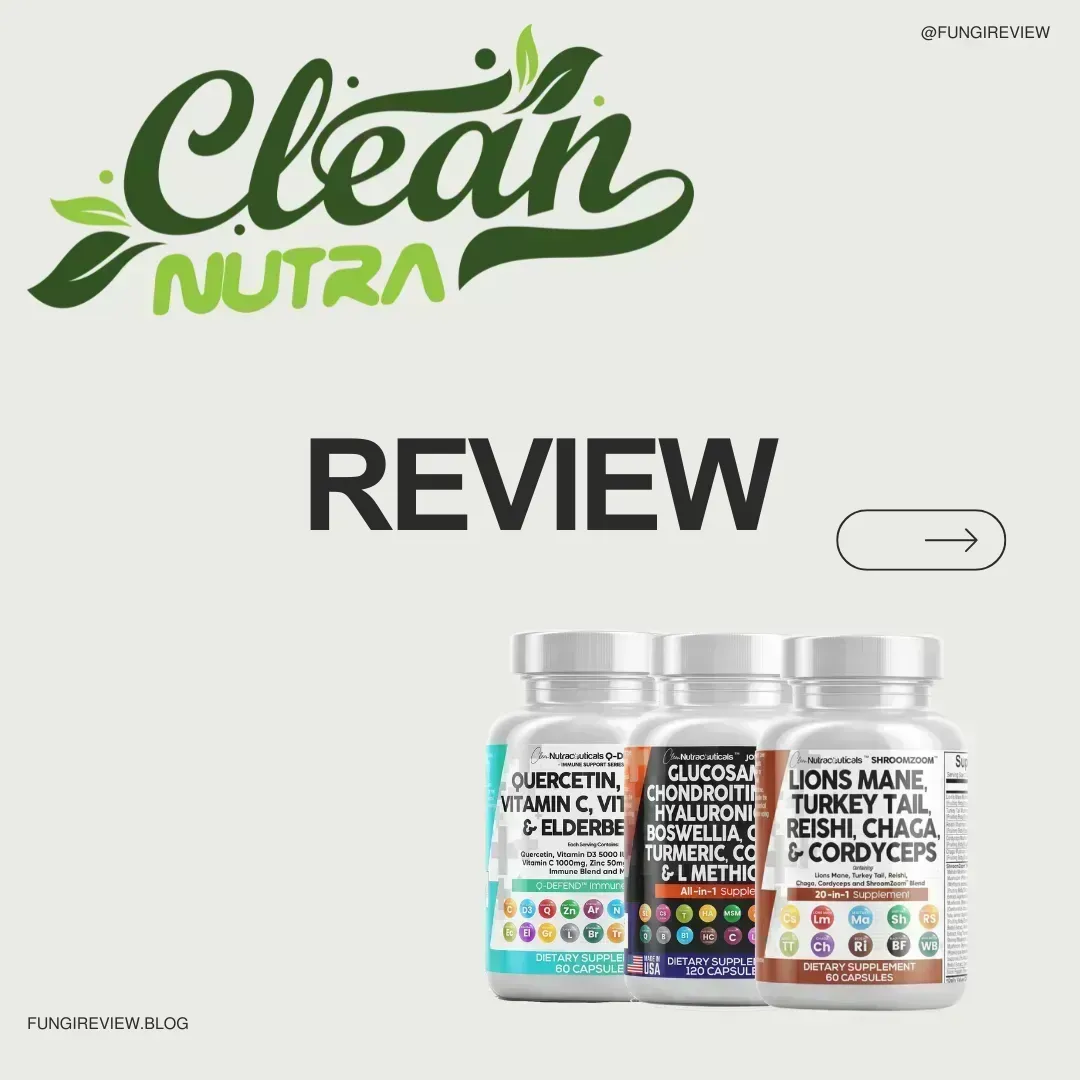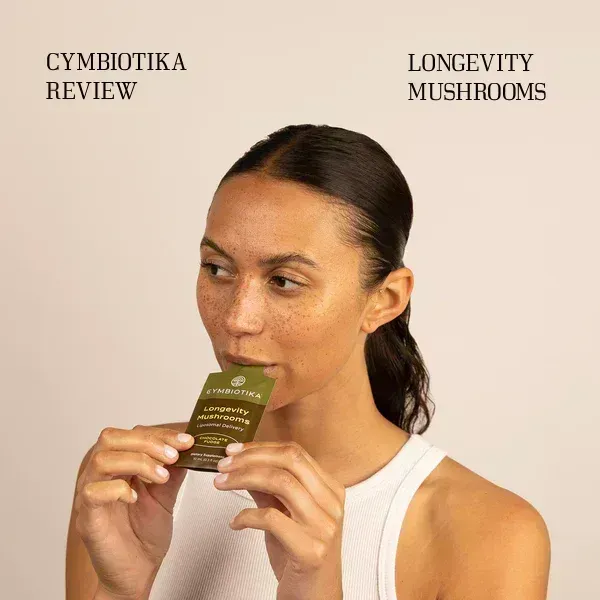As the popularity of mushroom supplements continues to grow, consumers are faced with a critical choice: should they opt for products made from the fruiting body of the mushroom or those derived from the mycelium or both? This decision is not just a matter of preference; it can significantly impact the effectiveness of the supplement. Understanding the differences between fruiting body and mycelium and how they are used in supplements is essential for making informed choices that align with your health goals. In this blog, we will explore the distinctions between fruiting body and mycelium, their respective benefits, and what to look for when selecting mushroom supplements.
Understanding the Basics: What Are Fruiting Body and Mycelium?
Before diving into the differences, let’s first define what we mean by “fruiting body” and “mycelium”:
Fruiting Body
The fruiting body of a mushroom is the part that we typically recognize as a mushroom—the cap, stem, and gills. This is the reproductive structure of the fungus, responsible for producing and releasing spores. The fruiting body is rich in bioactive compounds, including beta-glucans, triterpenes, and other polysaccharides, which are often credited with the therapeutic benefits of medicinal mushrooms.
Mycelium
Mycelium, on the other hand, is the vegetative part of the fungus. It consists of a network of thread-like structures called hyphae, which grow underground or within a substrate like wood, soil, or grain. Mycelium plays a crucial role in breaking down organic material and absorbing nutrients, but it is less visible than the fruiting body. In supplement production, mycelium is often grown on a substrate like grain or rice.
Key Differences Between Fruiting Body and Mycelium
Now that we have a basic understanding of what fruiting body and mycelium are, let’s explore the key differences between them in the context of mushroom supplements.
1. Concentration of Bio-Active Compounds
- Fruiting Body: The fruiting body is known for its high concentration of bio-active compounds, particularly beta-glucans, which are essential for the immune-boosting properties of mushrooms. Additionally, certain mushrooms like Reishi and Chaga contain unique compounds such as triterpenes and betulinic acid, which are primarily found in the fruiting body. Overall, a Fruiting body supplement should usually contain around 30% beta-glucans
- Mycelium: While mycelium also contains bio-active compounds, the concentration is typically lower than in the fruiting body. Mycelium-based products may have higher levels of polysaccharides, but these are often derived from the substrate (e.g., grain) on which the mycelium is grown, rather than from the mushroom itself. This dilution can reduce the overall potency of the supplement. Mycelium supplements typically has a beta-glucan content of around 5% or sometimes even 0. However, it has higher levels of polysaccharides and other properties that aren't as potent in fruiting bodies
Fact: Lion's mane supplements should be the fruiting body and mycelium extracted for the most effective results!
2. Purity and Fillers
- Fruiting Body: Supplements made from the fruiting body are generally considered purer because they consist solely of the mushroom itself. These products do not require a substrate, which means there are no fillers or additional substances to dilute the active compounds. However, for some mushrooms, the mycelium is actually the most potent part. Therefore, the answer varies as each mushroom is different, which is what makes this topic difficult to talk about.
- Mycelium: Mycelium is often grown on a substrate, such as grain or rice, which can remain in the final product. This can lead to a lower purity of the supplement, as a significant portion of the product may consist of the substrate rather than the mushroom itself. In some cases, up to 50% or more of the product may be non-mushroom material, reducing its efficacy. However, Paul Stamets, owner of Fungi Perfecti and Host Defense, claims from their lab reports that the rice actually had beneficial properties; if extracted correctly, mycelium has been proven to be more effective in some scenarios.
3. Extraction and Processing
- Fruiting Body: The extraction process for fruiting bodies is typically straightforward and involves either hot water extraction, alcohol extraction, or a combination of both (dual extraction). This process is effective in isolating the bio-active compounds, making them more bioavailable.
- Mycelium: Extracting bio-active compounds from mycelium can be more complex, especially when the mycelium is intertwined with the substrate. This can make it challenging to achieve the same level of potency as with fruiting body extracts. Additionally, because mycelium often contains a mix of fungal and non-fungal material, the extraction process may yield a product with lower concentrations of the desired compounds.
4. Scientific Research and Efficacy
- Fruiting Body: The majority of scientific studies on medicinal mushrooms focus on the fruiting body. Research has demonstrated the efficacy of fruiting body extracts in supporting immune health, reducing inflammation, and providing antioxidant benefits. The high concentration of bio-active compounds in the fruiting body is a key factor in these positive outcomes.
- Mycelium: While there is some research supporting the use of mycelium, it is less extensive compared to studies on the fruiting body. The effectiveness of mycelium-based products can vary widely depending on the growing conditions, substrate used, and processing methods. As a result, mycelium supplements may not always deliver the same level of health benefits as fruiting body products.
Pros and Cons of Fruiting Body and Mycelium Supplements
To help you make an informed decision, let’s summarize the pros and cons of each type of supplement:
Fruiting Body Supplements
- Pros:
- High concentration of bio-active compounds, especially beta-glucans.
- Pure product with no fillers or substrate material.
- Backed by extensive scientific research.
- Effective extraction methods that maximize bioavailability.
- Cons:
- Can be more expensive due to the higher cost of production.
- Limited availability for certain mushroom species.
Mycelium Supplements
- Pros:
- Often less expensive than fruiting body supplements.
- Easier and quicker to produce.
- Some products may offer unique bio-active compounds present in mycelium.
- Cons:
- Lower concentration of bio-active compounds.
- The presence of fillers or substrate material can dilute potency.
- Less scientific research supports their efficacy.
How to Choose Between Fruiting Body and Mycelium Supplements
Choosing between fruiting body and mycelium supplements ultimately depends on your health goals, budget, and the specific benefits you’re seeking. Here are some tips to help you make the right choice:
1. Consider Your Health Goals
- If you’re looking for a supplement to support immune health, reduce inflammation, or provide antioxidant benefits, fruiting body supplements are likely your best bet. The high concentration of bio-active compounds in the fruiting body makes these supplements particularly effective for these purposes.
- If you’re interested in general wellness or are on a budget, mycelium supplements can still offer benefits, especially if they are produced by a reputable brand that ensures quality and transparency.
2. Check the Label
- Always check the label to see if the product is made from the fruiting body, mycelium, or a combination of both. Look for information about the extraction method and the concentration of active compounds like beta-glucans.
- Be wary of products that do not provide detailed information on the label. Vague or incomplete labeling can be a sign that the product is not of high quality.
3. Look for Third-Party Testing
- Whether you choose a fruiting body or mycelium supplement, it’s essential to select a product that has been third-party tested for purity and potency. Third-party testing ensures that the product contains the compounds it claims to and is free from contaminants.
4. Consider the Source
- The source of the mushrooms is also important. When researching supplements, follow our mushroom product checklist to ensure quality and potency. Additionally, mushrooms sourced from regions with clean environments are generally of higher quality.
Conclusion: Making an Informed Choice
The decision between fruiting body and mycelium supplements is not one-size-fits-all. Both types of supplements have their place in the world of mushroom health products, and understanding the differences between them will help you choose the product that best suits your needs.
Fruiting body supplements are generally more potent, backed by scientific research, and free from fillers, making them an excellent choice for those seeking specific health benefits. On the other hand, mycelium supplements can be a more budget-friendly option and still offer some health benefits, especially when sourced from reputable brands.
At Fungi Review, we’re committed to helping you navigate the complex world of mushroom supplements with confidence. Be sure to explore our other blogs in the Mushroom Quality Guide series to learn more about how to choose high-quality products, interpret lab reports, and identify trustworthy brands.
Related Blogs:
- Understanding Lab Reports for Mushroom Products: A guide to reading and interpreting lab reports to ensure product quality.
- The Ultimate Mushroom Product Checklist: Practical tips for evaluating and choosing the best mushroom supplements.
- Mycelium on Grain: What You Need to Know: An in-depth look at the implications of grain-based mycelium in mushroom supplements.
- How to Identify Trustworthy Mushroom Brands: Learn how to recognize and select brands you can trust.
By equipping yourself with this knowledge, you’ll be better prepared to select the right mushroom supplements for your health journey, ensuring that you get the most out of the incredible benefits that mushrooms have to offer.
Citations:
-
Robinson, M. M., & Zhang, X. (2022). "Fruiting Body and Mycelium: A Comparative Overview of Their Medicinal Benefits." National Center for Biotechnology Information.
- This article provides an in-depth comparison of the medicinal benefits of fruiting bodies and mycelium, focusing on their respective bioactive compounds.
-
Mushroom Culture UK. "Mycelium vs. Fruitbody: Which is Better?" Mushroom Culture UK.
- An exploration of the differences between mycelium and fruiting bodies, including their growth processes and benefits in mushroom cultivation.
-
Mushroom Revival. "Fruiting Body Mushrooms vs. Mycelium: What’s the Difference?" Mushroom Revival Blog.
- This blog post discusses the differences between fruiting bodies and mycelium, emphasizing their uses in supplements and the mushroom industry.
-
Savoie, J. M., & Largeteau, M. L. (2022). "Mycelium vs. Fruiting Bodies: A Microbial Perspective on Medicinal Mushrooms." MDPI Microorganisms Journal.
- The paper examines the microbial properties of mycelium and fruiting bodies, offering insights into their medicinal applications.
-
Ritz, K., & Griffiths, B. S. (2005). "The Ecological Significance of Mycelium in Fungi: Interactions with Soil and Other Organisms." National Center for Biotechnology Information.
- A study on the ecological roles of mycelium, particularly in soil environments, compared to fruiting bodies.
-
North Spore. "Common Contamination in Mushroom Cultivation." North Spore Blog.
- This blog post addresses common issues in mushroom cultivation, including contamination risks associated with mycelium and fruiting bodies.
-
Noomadics Blog. "Medicinal Mushrooms: The Controversy Between Mycelium and Fruiting Bodies on Grain." Noomadics Blog.
- An analysis of the ongoing debate within the medicinal mushroom industry regarding the use of mycelium on grain versus fruiting bodies in supplements.





